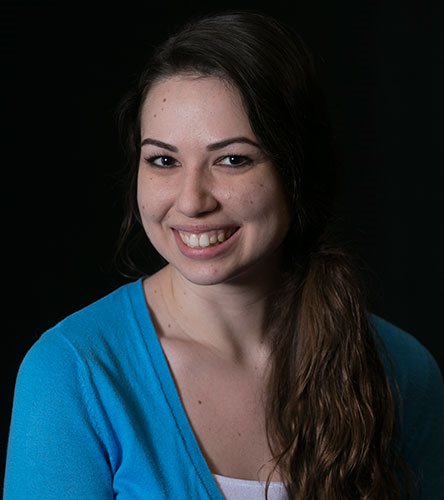BROOKLYN
245 Clinton Ave., Brooklyn, NY 11205
Main: 718.940.5300
Admissions: 718.940.5800
Fax: 718.940.5680
LONG ISLAND
155 W. Roe Blvd., Patchogue, NY 11772
Main: 631.687.5100
Admissions: 631.687.4500
Fax: 631.687.4539
By Jennifer Joniak '15

One of the greatest challenges an individual can overcome is escaping the confines of his own self-imposed limitations. The late spiritual leader Thomas Merton lived a controversial life and was constantly trying to break free from the young, idealistic version of himself that society praised. His actions and writings during the span of his 53-year life have come to influence many individuals who are on their own spiritual journeys.
Robert Ellsberg, the publisher, executive director and editor-in-chief of Orbis Books, served as this year’s Dr. Reza and Georgianna Clifford Khatib Chair in Comparative Religion. The subject of this year’s seventh annual lecture was “Thomas Merton — Spiritual Explorer,” in honor of the spiritual leader’s centennial.
In his early years, Thomas Merton was a scandalous character who made many poor decisions. Ellsberg explained that this lifestyle brought Merton great emptiness and led him onto a search for something more. He converted to Catholicism, which was the first step in his spiritual development.
A friend of Merton’s encouraged him to strive for sainthood, the ultimate honor in the Catholic faith. This suggestion is what sent Merton on a search for his own understanding of what it meant “to be what God created him to be,” Ellsberg said.
Merton was drawn to the lifestyle of the Cistercians of the Strict Observance, also referred to as the Trappists, whom he had read about in The Catholic Encyclopedia. They “sought to restore the austere discipline of early monasticism, with a greater emphasis on manual labor, regular prayer and a strict spirit of silence.” When he joined in 1941, Ellsberg said that Merton went in thinking he would be able to leave the problems of the world behind and “be invisible.”
The illusion that Merton would be able to disappear into solitude was shattered when his autobiography, The Seven Storey Mountain, was released in 1948. “Merton was suddenly the most famous monk in America,” Ellsberg said. The image of the man portrayed in those pages was how everyone came to view Merton.
Moving forward in his spiritual search, Merton changed his views of the world over time. He started to dissociate himself with the man who penned The Seven Storey Mountain. That man had believed the monastery to be a secluded space separate from the world’s problems. Ellsberg said that “Only with time did he [Merton] realize that ‘the monastery is not an “escape” from the world. On the contrary, by being in the monastery I take my true part in all the struggles and sufferings of the world.’”
This realization sparked what Ellsberg called “a crucial turning point in his [Merton’s] evolution as a monk...He came to see that the entire purpose of the monastic life, or any spiritual search for that matter, was to achieve this vision, this awakening from a dream of separateness to realize our underlying oneness, our unity in what he called ‘a hidden wholeness.’”
The man undergoing this spiritual epiphany became quite controversial, according to Ellsberg, and was finally awakened to the happenings in the world around him. Merton started writing extensively about current issues, but his works were censored by his superiors, for they did not follow the silent example set by the Trappists.
These later writings by Merton were a great source of discord, and Ellsberg said that maintaining his vow of stability (the promise to remain in the monastery) was one of Merton’s most difficult challenges. He had contemplated leaving the monastery, but eventually realized that was not a necessary course of action. Merton wrote, “It does not much matter where you are, as long as you can be at peace about it and live your life.” He was finally allowed to move, Ellsberg said, into “a simple hermitage on the monastery grounds, a situation that proved conducive to both prayer and creative work.”
Once living an even more solitary life, Merton faced yet another challenge. He engaged in an illicit affair with a hospital nurse from Louisville, which forced him to choose what type of life he wanted to live. “What was at stake was not just the violation of his monastic vows,” Ellsberg said, “but a kind of doubleness and lack of integrity.”
Merton decided to honor his vow to the monastery because “he came to the conclusion that his vocation was not just for himself, but that it meant something to the rest of the world,” Ellsberg said. “In effect, he returned to the idea that had first attracted him to the Abbey — that the monastery was in some sense the axis mundi, that the monks were in some way, with their prayers and their faithfulness, keeping the world turning.”
In 1966, Merton consigned himself to living the remainder of his life in solitude. However, in 1968, the abbott allowed him to travel to further explore Eastern spiritual customs, which enabled him to reflect on his life. After giving a talk about monastic values, Ellsberg said Merton “was found dead in his room, apparently electrocuted by the faulty wiring of a fan.”
Ellsberg’s conclusion about Merton explains his importance in the lives of the many he has influenced. “Merton, the spiritual explorer, traveled without maps, and created his path by walking it. In his own struggles to be faithful, he created possibilities for many others to live with greater compassion, courage and integrity in our frantic and imperiled century...For those of us who struggle to see the road before us, he is a welcome companion.”
Get Social
Get Social